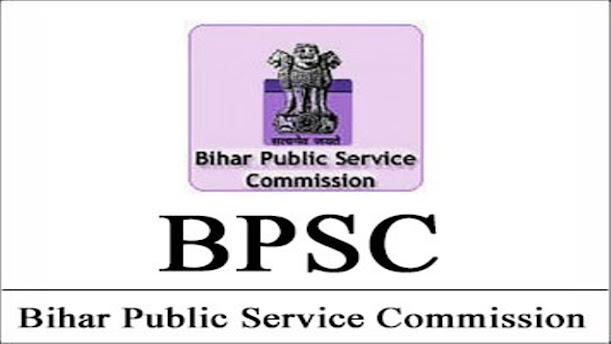BPSC 66th Mains: History (Tribal Revolt)
Santhal Revolt
What were the causes of the Santhal revolt? What were its course and outcome?
Approach
- Brief intro about Santhal revolt
- Causes of the Revolt (under different sub-headings)
- Course of the Revolt & its important leaders
- Outcome of the Revolt
- Conclusion
Santhal Revolt, also known as Santhal Hool was the most massive among all the tribal revolts. Santhals inhabitated the region between Bhagalpur and Rajmahal which they called, 'Daman-i-koh'. In 1855, they rose in revolt and made a determined attempt to expel the outsiders whom they called 'Dikus' and proclaimed the complete annihilation of colonial rule and usher the reign of truth, i.e., Satyug.
Causes of the revolt -
- Zamindari system and its ill effect - British government introduced Zamindari settlement or Permanent settlement in the end of 18th century and by the first half of the 19th century, it was made operational in Bihar, Bengal and Odisha. The tax rates were fixed arbitrarily and the Santhals had to pay taxes which was more than three times what they used to pay earlier. Many were not able to pay the increased taxes and were evicted from their own land.
- Debt trap - To pay the increased taxes, many Santhal people took loans from the moneylenders who charges very high interest and thus Santhals were unable to repay the loan and thus got trapped in vicious debt trap. As a result, the moneylender occupied their land. Thus, they were reduced to the status of tenants or labourers on the same land which they used to cultivate earlier.
- Restriction on forest rights - British government imposed various restrictions on the use of forest land and forest resources. Government also banned Shifting cultivation practiced by Santhals.
- Entry of Dikus - British government threw open tribal lands to outsiders. This led to the entry of traders, moneylenders and government officials who began to exploit them.
- Socio-religious cause - The traditional religious life of Santhals were also interfered by the Britishers and Colonial rule. British government banned many tribal practices, imposed restrictions and also the missionary activities by Christian Missionaries caused huge resentment among Santhals.
- Political reason - British government refused to recognise the traditional tribal political institutions and imposed colonial rule upon them without considering the varying needs of tribal people.
- No legal support from the government - The Santhals who were exploited by the Dikus tried to take shelter of the Police and the Courts but soon they realised that the government officers were hand in gloves with these oppressors.
Thus, all these factors caused huge resentment among the Santhals against Dikus and Colonial regime and this rising resentment found its expression in the form of 'Santhal Revolt' in 1855.
Course of the Revolt -
- In June 1855, tribal leaders called an assembly of nearly 6000 Santhals representing 400 villages at Bhaganidhi. In this assembly, it was decided to raise a banner of revolt to get rid of Dikus and their Colonial master once and for all and usher the reign of truth (Satyug).
- The revolt was led by two brothers, Sidhu and Kanhu who mobilised people by claiming that the Thakur had communicated with them and told them to take up arms against Dikus.
- They organised a huge procession accompanied by drummers and musicians. Soon, nearly 60,000 Santhals gathered and attacked the Mahajans and Zamindars and their houses, police station, railway station, post office and other symbols of colonial power.
- Once, the government realised the scale of the rebellion, it organised a major campaign. Martial law was declared in affected areas.
- Sidhu and Kanhu were arrested, and the revolt had a brutal end, it was crushed ruthlessly in 1856 and nearly 15,000 Santhals were killed.
Consequences of the Revolt -
- The government identified the Santhal concentrated areas as Santhal Paraganas and was given an autonomous status where common colonial rule was not applicable.
- Santhal Pargana tenancy act was implemented under which the traditional tribal political institutions were recognised and were given police related powers.
Though the Santhal Revolt failed to fulfill its objectives, it was successful in getting some reform and above all the tribal people got their identity recognised.
BPSC 66th Mains - History Questions (GS - I)
Question 2: Explain the characteristics of Birsa Movement.
BPSC 66th Mains - Polity Questions (GS - II)
Question 1: "The role of the President of India is like an old man in family who has all the authorities, however he cannot do anything if the naughty young members of the family do not listen him". Evaluate.
Question 2: "Indian federal structure is constitutionally oriented towards the central government." Explain.
Question 3: "The uneven development of Indian states has created many socio-economic and political problems." Critically analyse the statement with special reference to Bihar.
Question 4: "Parliament of India is an effective forum of national integration." Discuss.
Notes to boost your Preparation
Optional Notes
Note - This is my Vision IAS Notes (Vision IAS Class Notes) and Ashutosh Pandey Sir's Public Administration Class notes. I've also added some of the information on my own.
Hope! It will help you to achieve your dream of getting selected in Civil Services Examination 👍





